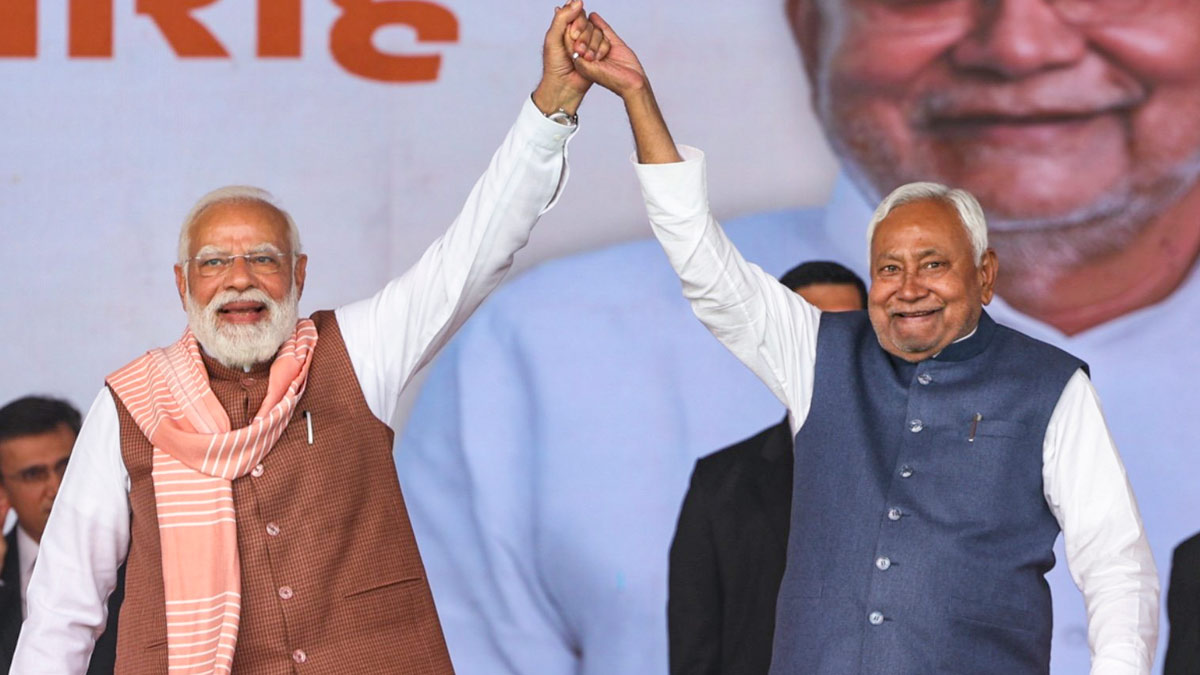Caste, coalition, and continuity: Decoding CM Nitish Kumar's new Bihar cabinet

Nitish Kumar’s swearing-in as chief minister of Bihar for a record tenth term marks a significant moment in the state’s political history. He has remained a central figure in Bihar politics, with no clear alternative emerging over the years.
The ceremony at Gandhi Maidan was attended by Prime Minister Narendra Modi, Union Home Minister Amit Shah, BJP president J.P. Nadda, and several chief ministers from NDA-ruled states.
The new cabinet comprises 26 ministers from NDA allies, combining continuity with opportunities for new MLAs. Caste and community representation remain central to the composition. Nitish, from the Kurmi OBC community, continues to lead, while the deputy chief ministers are Samrat Chaudhary from the Kushwaha caste and Vijay Kumar Sinha from the Bhumihar community, a forward caste. Both are from the BJP and have retained their previous posts.
Chaudhary’s return reflects both his political standing and the BJP’s strategy. His departure from RJD in 2022 and rise within the BJP have made him a key figure in the party’s OBC outreach. Sinha’s continuation balances the BJP’s focus on upper-caste consolidation. Overall, eight ministers belong to the upper castes, and five of them are from the BJP. JD(U) has also included members from upper-caste communities to ensure proportional representation.
Three women ministers have been appointed: two from the BJP and one from JD(U). One minister from a minority community is included.
From JD(U)’s allocation, senior leaders have retained their positions. Bijendra Prasad Yadav, a nine-term MLA and long-time associate of Nitish, remains a minister. Shrawan Kumar, who previously held the rural development portfolio, has been retained. Ashok Choudhary, a senior party figure and member of the legislative council, is also included. Other JD(U) ministers include Leshi Singh, Madan Sahni, Mohd Zama Khan, Sunil Kumar, and Madan Sahani. These appointments reflect the party’s emphasis on continuity and administrative experience.
The cabinet also includes younger and new members. Shreyasi Singh, a Commonwealth Games gold medallist and second-term MLA, joins as a new entrant. Rama Nishad, elected from Aurai, adds representation from the OBC fishing community. She is the daughter-in-law of former minister Jaynarayan Nishad and the wife of former MP Ajay Nishad.
From the BJP, new and returning ministers include Dilip Jaiswal, state party president; Mangal Pandey; Nitin Nabin; Ram Kripal Yadav; Arun Shankar Prasad; Surendra Mehta; Narayan Prasad; Rama Nishad; Lakhendra Kumar Raushan; and Pramod Kumar.
Allies of the NDA are represented as well. Deepak Prakash, son of RLM chief Upendra Kushwaha, will be nominated to the council. Santosh Kumar Suman from Hindustani Awam Morcha, son of former Chief Minister Jitan Ram Manjhi, retains his ministerial position, ensuring representation for Dalit groups, particularly the Musahar community. From the LJP (RV), Sanjay Kumar and Sanjay Kumar Singh are included.
The ceremony also highlighted the political messaging of the NDA. Modi’s presence and his gesture of twirling the gamchha symbolised the alliance’s collective effort and emphasised his role in the electoral success.
The cabinet’s composition reflects a balance of experience and new faces, caste and community representation, and coalition considerations. Departments are expected to be allocated soon, with the focus on maintaining administrative continuity and addressing development priorities across the state.
India